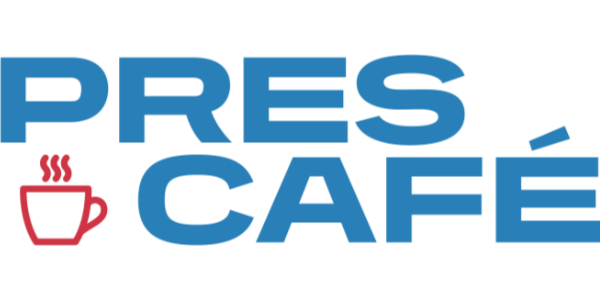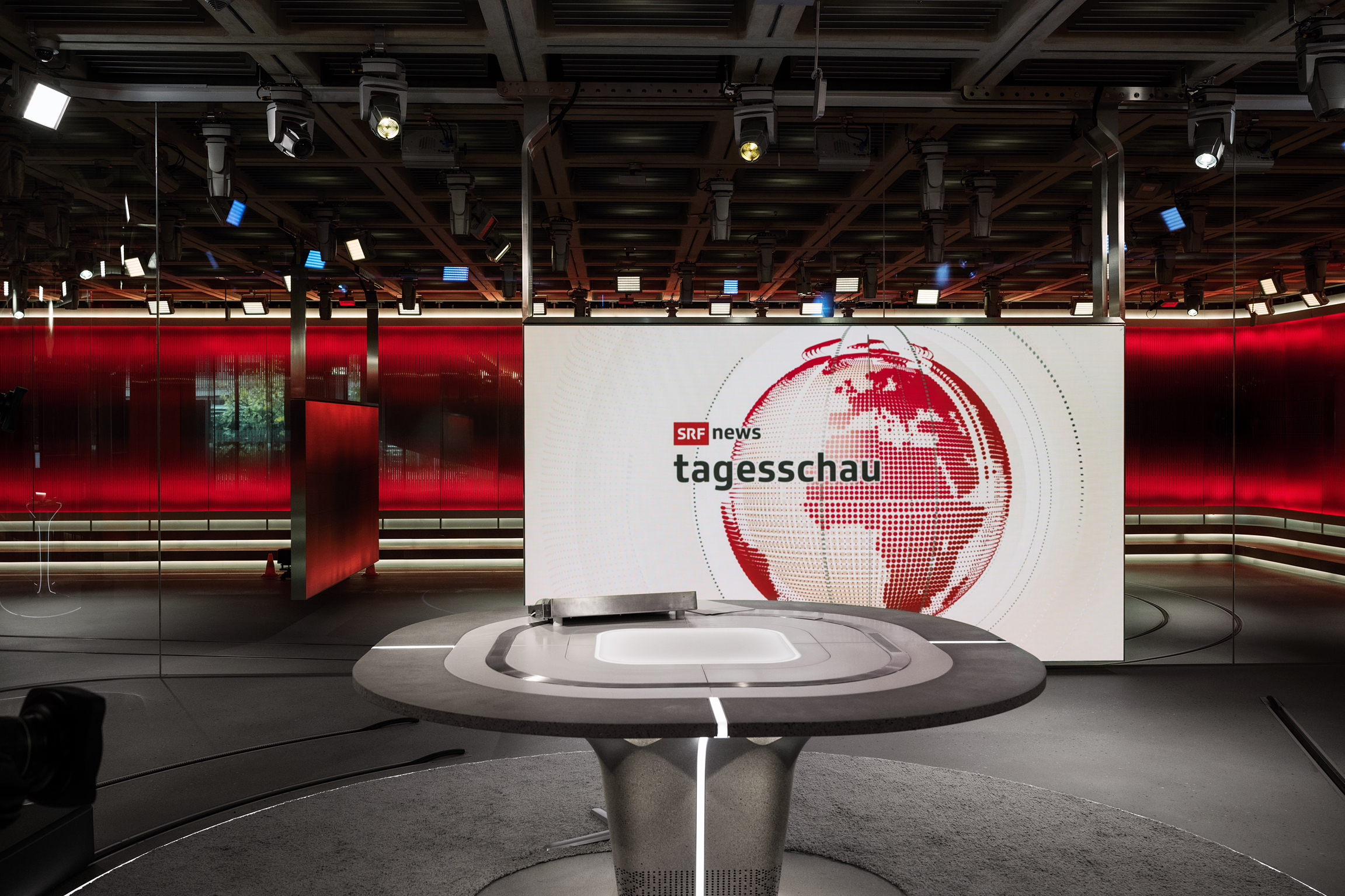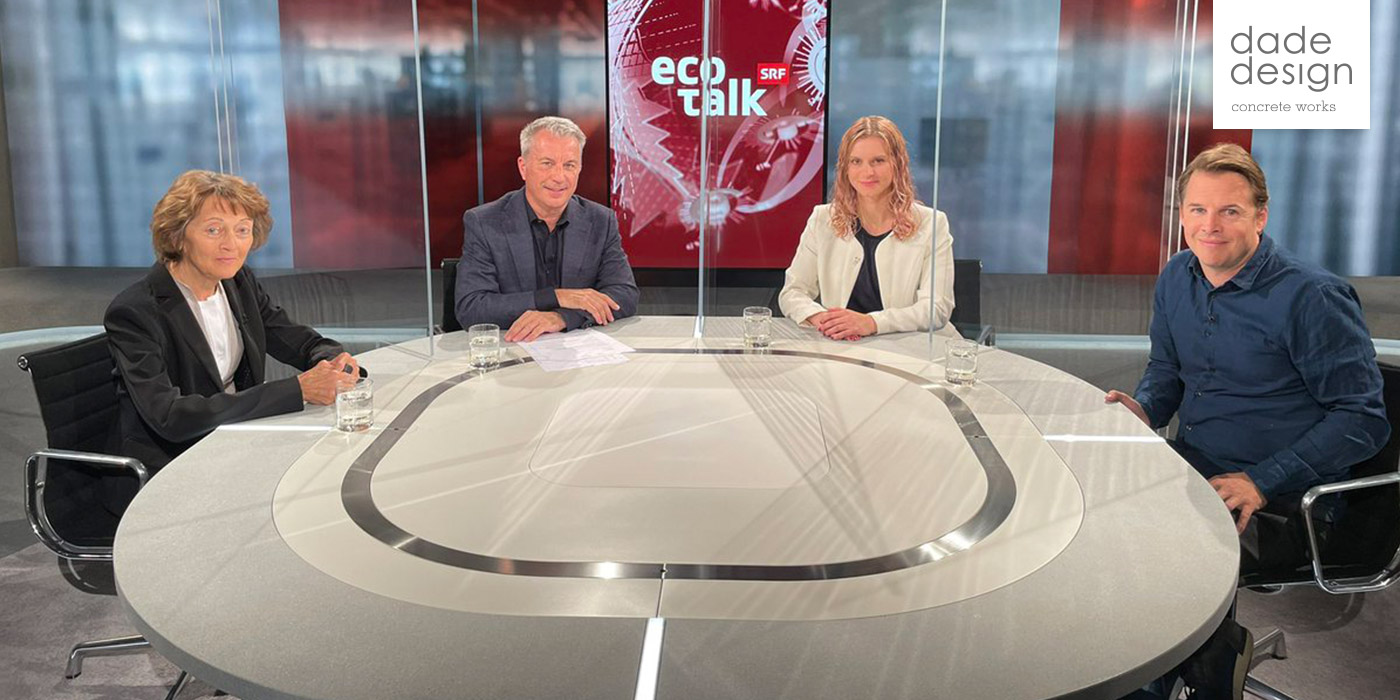18-11-2022, 06:25 PM
Finally it came… SRF Tagesschau has made the move to a new studio in the ground floor of the SRF newsroom building in Zurich, after over three years of delays and an additional two years of planning. From Monday, both the evening edition of SRF Tagesschau and 10 vor 10 (the local equivalent of Newsnight) finally occupy the ground floor studio of the new newsroom building in the Leutschenbach Television Production Centre, which houses the headquarters of the German arm of the Swiss Broadcasting Corporation. Other news, current affairs and infotainment shows, like tabloid magazine Gesichter & Geschichten, business interview magazine Eco Talk, and religious programme Wort zum Sonntag, as well as sport programmes will move from next year.
www.youtube.com
www.srgd.ch
This new start for both the main Tagesschau and 10 vor 10 is the conclusion of that massive process which suffered many setbacks, heavy fodder and lots of controversies over the course of these years. To understand this, here’s an extended explanation of how it happened:
THE BUILDING AND THE DESIGN
The newsroom building was supposed to be the centerpiece of what was to be a major repositioning of SRF's news department workflows due to budget cuts at the SRF, causing all operations to be centralised out of the Leutschenbach Television Centre, excluding the cultural operation, which increased its presence and moved entirely to Basel. The new building and workflows would unify all programming newsrooms under a common space and brand, SRF News, which debuted in 2019 as a digital-only brand. It soon expanded to TV as SRF's Tagesschau Nacht was replaced by a Euronews-like update, the SRF Newsflash, which also launched on SRF zwei to cater a younger audience.
The new building, designed by Lucerne-based Penzel Valier, is a SMPTE-standard building where everything is supposed to be IP-based, with no need to use SDI. The space was built using a core, leading up to two longitudinal open spaces in three strip-shaped development zones, resulting in an open-space newsroom sprawling up to three floors. It also includes a number of broadcast studios integrated into the space. The ground floor space houses the staff restaurant, which is also open to the public; the restaurant surrounds the Tagesschau main studio space, and onlookers can watch the broadcast being produced live.
Swiss design magazine Espazium made a lengthy report about the new building, also focusing on its eco-friendly benefits and multidisciplinary design solutions:
www.espazium.ch
The new studio sets were designed by Jürgen Bieling (Billionpoints), a well known German designer, being responsible for doing multiple TV sets in Europe and beyond (mostly in the Middle East and East Asia). Bieling was directly selected by Penzel Valier, after he proposed designing simple spaces dominated by lots of screens, and a design feeling in tone with the building’s overall industrial style, which will be eventually used by most of SRF's news and current affairs programming. Additionally, if you look closer, the studio also has the Electric Friends tower cameras already in use in NBH Studio B. Bieling also worked with Zurich set designer Rico Chiari to design the custom concrete and steel desks, which were provided by local specialised firm Dade Design; SRF has since asked for new desks for the sets of other programmes, including its sport studios, its Gesichter & Geschichten tabloid magazine show and interview show Eco Talk, thanks to the modularity of the design.
www.dade-design.com
The new studios were also supposed to debut with the rebrand of the news service into a corporate brand, which unified all SRF newscasts within the SRF News brand, and which eventually launched in December 2019 with the old studios and workflow still in place. The new corporate look was designed by a Zurich-based brand design and experience firm Regardez! Entertainment, whose designs visualise each shows’ different content context in an abstract form by using the building blocks of the each of the SRF platforms (radio, online, mobile and TV). Dalton Maag also modified the SBC typeface design to create a rounded version specifically for the news department. The new sonic brand was composed and designed by Amsterdam-based CapeRock, including all beds, sound effects and branding elements, and was extended to the radio news service, as well as SRF 4 News and Info 3 (SRF 3’s equivalent to Newsbeat), when its newsrooms moved to Zurich in November 2021 (more on that later). The overall redesign won a Red Dot Design Award and a World Media Festival design award in 2021.
regardez.ch
caperock.tv
www.youtube.com
THE PROBLEMS AND THE CHALLENGES
However, there have been lots of problems with the new Mosart automation system running on IP technology, alongside a new cloud-based editing and production platform, based on MediaCentral and NEXIS, provided by Avid, which have delayed the launch of the new sets; the original plan for the launch was for Autumn 2019, but was later postponed to Spring 2020; the pandemic and these continued problems caused the project to be indefinitely postponed, causing SRF to invest millions in attempting to solve these technical issues.
Due to the constant technical problems and increased budget constraints, there have been reports of increasing low morale and heavy turnover at the newsroom. Even the director responsible for the project resigned early in 2021. So far, the total overcost of the moving has increased to over 70 million Swiss francs. However, the newsroom sets have been up and running since November 2021, when SRF Börse and Schweiz Aktuell finally made the move. When they moved from their old home in Studio 12 in the main TPC building, the graphics had many tweaks, mostly improved and more fluent animations for straps and wipes.
youtu.be
youtu.be
Since the end of June 2022, the midday and early evening editions of SRF Tagesschau air from the second floor newsroom studio; additionally, special reports air from the space.
youtu.be
The issues related to the new technology caused more cost-cutting in the broadcaster, including moving the radio newsroom from Bern to the new building (politics and current affairs remain in Bern), changing the news production model from programme-based to a multi-platform, story-based one (including merging all TV newsrooms and production teams into a single one led by Tagesschau editor Regula Messerli Durisch, who serves as content coordinator) and moving the radio stations from its longtime southern Zurich (Brunnenhof) building to the former service garage space of the TPC in the campus, converted for the needs of broadcasting, the Radio Hall. The radio stations made the move on August 30, but Radio SRF 2 remains with the culture department in Basel.
WHY MOVING TO A NEW BUILDING
However, these moves to centralise all divisions of SRF into the north Zurich facility, in the Leutschenbach district, began after the failed No-Billag initiative to abolish the license fee and the decision by the Federal Council to change, in the aftermath of the former, the licensing provider to a division of an insurance infrastructure company, Serafe AG, which took over as provider in 2019, alongside a new Radio and Television Act narrowly approved in a 2015 referendum, which reduced the cost of the license fee by 15%, alongside a modular payment system for low-income housing; that was the reason of building a new newsroom facility to centralise all SRF news teams; additionally, there were plans for demolishing TPC Studio 1 to build a visitor centre and offices for production and administrative needs, even launching a contest for designs, which was subsequently won by Lugano office Durisch + Nolli; however, the space wasn't finally built due to budget constraints.
Another casualty of the cost-cutting measures was the cancellation of many long-running SRF current affairs programmes, for example, documentary programme Einstein Spezial and Swiss Standard German-speaking business investigative magazine Eco, since rebooted as a Swiss German-speaking interview-focused show, Eco Talk; additionally, the late news and sport programmes, Tagesschau Nacht and SRF sport aktuell, were replaced by shorter, voice-over only flashes, both airing on younger-skewed SRF zwei (and repeated during the night on SRF 1). Coincidentally, SRF News Flash (which replaced Tagesschau Nacht) became another casualty of the cost-cutting measures, with the voice-over reports being replaced by a straight recording of the 10pm SRF radio newscast, augmented with imagery and a news ticker.
youtu.be
www.youtube.com
www.srgd.ch
This new start for both the main Tagesschau and 10 vor 10 is the conclusion of that massive process which suffered many setbacks, heavy fodder and lots of controversies over the course of these years. To understand this, here’s an extended explanation of how it happened:
THE BUILDING AND THE DESIGN
The newsroom building was supposed to be the centerpiece of what was to be a major repositioning of SRF's news department workflows due to budget cuts at the SRF, causing all operations to be centralised out of the Leutschenbach Television Centre, excluding the cultural operation, which increased its presence and moved entirely to Basel. The new building and workflows would unify all programming newsrooms under a common space and brand, SRF News, which debuted in 2019 as a digital-only brand. It soon expanded to TV as SRF's Tagesschau Nacht was replaced by a Euronews-like update, the SRF Newsflash, which also launched on SRF zwei to cater a younger audience.
The new building, designed by Lucerne-based Penzel Valier, is a SMPTE-standard building where everything is supposed to be IP-based, with no need to use SDI. The space was built using a core, leading up to two longitudinal open spaces in three strip-shaped development zones, resulting in an open-space newsroom sprawling up to three floors. It also includes a number of broadcast studios integrated into the space. The ground floor space houses the staff restaurant, which is also open to the public; the restaurant surrounds the Tagesschau main studio space, and onlookers can watch the broadcast being produced live.
Swiss design magazine Espazium made a lengthy report about the new building, also focusing on its eco-friendly benefits and multidisciplinary design solutions:
www.espazium.ch
The new studio sets were designed by Jürgen Bieling (Billionpoints), a well known German designer, being responsible for doing multiple TV sets in Europe and beyond (mostly in the Middle East and East Asia). Bieling was directly selected by Penzel Valier, after he proposed designing simple spaces dominated by lots of screens, and a design feeling in tone with the building’s overall industrial style, which will be eventually used by most of SRF's news and current affairs programming. Additionally, if you look closer, the studio also has the Electric Friends tower cameras already in use in NBH Studio B. Bieling also worked with Zurich set designer Rico Chiari to design the custom concrete and steel desks, which were provided by local specialised firm Dade Design; SRF has since asked for new desks for the sets of other programmes, including its sport studios, its Gesichter & Geschichten tabloid magazine show and interview show Eco Talk, thanks to the modularity of the design.
www.dade-design.com
The new studios were also supposed to debut with the rebrand of the news service into a corporate brand, which unified all SRF newscasts within the SRF News brand, and which eventually launched in December 2019 with the old studios and workflow still in place. The new corporate look was designed by a Zurich-based brand design and experience firm Regardez! Entertainment, whose designs visualise each shows’ different content context in an abstract form by using the building blocks of the each of the SRF platforms (radio, online, mobile and TV). Dalton Maag also modified the SBC typeface design to create a rounded version specifically for the news department. The new sonic brand was composed and designed by Amsterdam-based CapeRock, including all beds, sound effects and branding elements, and was extended to the radio news service, as well as SRF 4 News and Info 3 (SRF 3’s equivalent to Newsbeat), when its newsrooms moved to Zurich in November 2021 (more on that later). The overall redesign won a Red Dot Design Award and a World Media Festival design award in 2021.
regardez.ch
caperock.tv
www.youtube.com
THE PROBLEMS AND THE CHALLENGES
However, there have been lots of problems with the new Mosart automation system running on IP technology, alongside a new cloud-based editing and production platform, based on MediaCentral and NEXIS, provided by Avid, which have delayed the launch of the new sets; the original plan for the launch was for Autumn 2019, but was later postponed to Spring 2020; the pandemic and these continued problems caused the project to be indefinitely postponed, causing SRF to invest millions in attempting to solve these technical issues.
Due to the constant technical problems and increased budget constraints, there have been reports of increasing low morale and heavy turnover at the newsroom. Even the director responsible for the project resigned early in 2021. So far, the total overcost of the moving has increased to over 70 million Swiss francs. However, the newsroom sets have been up and running since November 2021, when SRF Börse and Schweiz Aktuell finally made the move. When they moved from their old home in Studio 12 in the main TPC building, the graphics had many tweaks, mostly improved and more fluent animations for straps and wipes.
youtu.be
youtu.be
Since the end of June 2022, the midday and early evening editions of SRF Tagesschau air from the second floor newsroom studio; additionally, special reports air from the space.
youtu.be
The issues related to the new technology caused more cost-cutting in the broadcaster, including moving the radio newsroom from Bern to the new building (politics and current affairs remain in Bern), changing the news production model from programme-based to a multi-platform, story-based one (including merging all TV newsrooms and production teams into a single one led by Tagesschau editor Regula Messerli Durisch, who serves as content coordinator) and moving the radio stations from its longtime southern Zurich (Brunnenhof) building to the former service garage space of the TPC in the campus, converted for the needs of broadcasting, the Radio Hall. The radio stations made the move on August 30, but Radio SRF 2 remains with the culture department in Basel.
WHY MOVING TO A NEW BUILDING
However, these moves to centralise all divisions of SRF into the north Zurich facility, in the Leutschenbach district, began after the failed No-Billag initiative to abolish the license fee and the decision by the Federal Council to change, in the aftermath of the former, the licensing provider to a division of an insurance infrastructure company, Serafe AG, which took over as provider in 2019, alongside a new Radio and Television Act narrowly approved in a 2015 referendum, which reduced the cost of the license fee by 15%, alongside a modular payment system for low-income housing; that was the reason of building a new newsroom facility to centralise all SRF news teams; additionally, there were plans for demolishing TPC Studio 1 to build a visitor centre and offices for production and administrative needs, even launching a contest for designs, which was subsequently won by Lugano office Durisch + Nolli; however, the space wasn't finally built due to budget constraints.
Another casualty of the cost-cutting measures was the cancellation of many long-running SRF current affairs programmes, for example, documentary programme Einstein Spezial and Swiss Standard German-speaking business investigative magazine Eco, since rebooted as a Swiss German-speaking interview-focused show, Eco Talk; additionally, the late news and sport programmes, Tagesschau Nacht and SRF sport aktuell, were replaced by shorter, voice-over only flashes, both airing on younger-skewed SRF zwei (and repeated during the night on SRF 1). Coincidentally, SRF News Flash (which replaced Tagesschau Nacht) became another casualty of the cost-cutting measures, with the voice-over reports being replaced by a straight recording of the 10pm SRF radio newscast, augmented with imagery and a news ticker.
youtu.be





![[-]](https://pres.cafe/images//collapse.png)